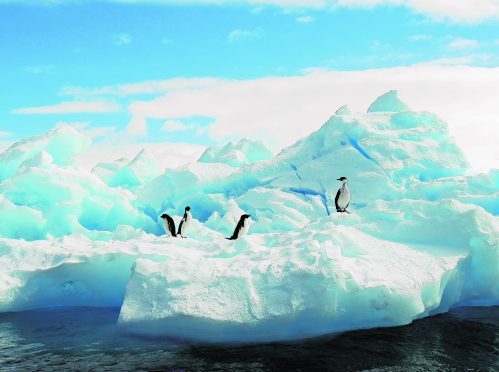They call it the “end of the world”. But it’s really only the beginning.
Ushuaia is South America’s most southerly town, set by the sea beneath the snow-covered Andes. A stunning location. It was from here that we set sail on our sturdy expedition ship, the Sea Adventurer, for our voyage to Antarctica, the white continent…
After a brief stop in the Falkland Islands (which are very much worth a visit in their own right), we head out towards South Georgia, a small island in the middle of the southern ocean. This will take two whole days at sea. The weather forecast is not so good – storms. I wonder how empty the dining room will be tomorrow.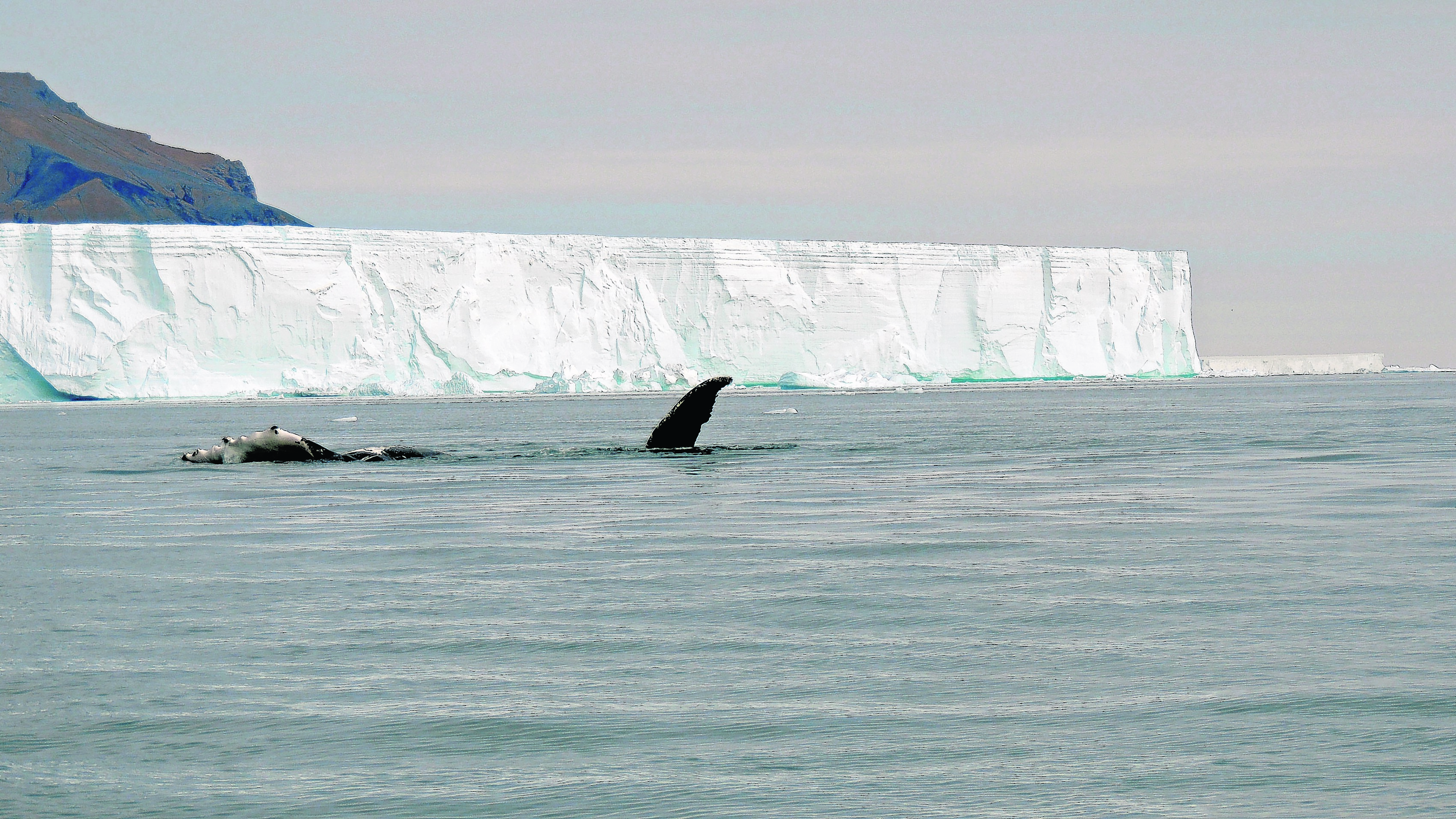
NEXT DAY
Outside, the wind and the waves have united to create a real rollercoaster. When I look out the window, I see either a blue sky or a sheet of water. There is no horizon. Lynda and I dare where others fear to tread and arrive in the ship’s restaurant for breakfast in one piece. From our seat of safety, we observe with malicious glee the futile attempts of other passengers to reach a table. They all resemble penguins in various stages of inebriation. Some are catapulted by hidden centrifugal forces in one or other direction (usually the wrong one), others stand rooted to the spot at an angle of 45 degrees, many stomp around like remote-controlled robots. Sound is also provided thanks to flying plates, knives, forks. Great fun!
ANOTHER DAY AT SEA
We are still at sea. Blue sky, sunshine, but the ship continues to roll and pitch. However, with my lithe, muscular body, skilful use of weight transfer, and elegant sway of hips, I have no difficulty in getting from the breakfast buffet to my table. The admiring look of a white-haired female octogenarian says it all!
In the afternoon, we stagger outside and enjoy the very cold sea air (even though it’s summer here in the southern hemisphere). Two wandering albatrosses accompany the ship. They seem to take an interest in us, circling, diving, banking, wheeling, sweeping. They never flap their wings, using the wind and air currents to control their flight. Majestic. Beside us on the deck are a number of hardy birders.
What is a birder? He is a most unusual, eccentric member of the human race. He loves birds. No, he worships them in a perverse sort of way. Anything with feathers drives him to the edge of insanity: his eyes glow with burning enthusiasm, his breathing is similar to that of a charging bull, the twitching of his hands suggests the first symptoms of insanity.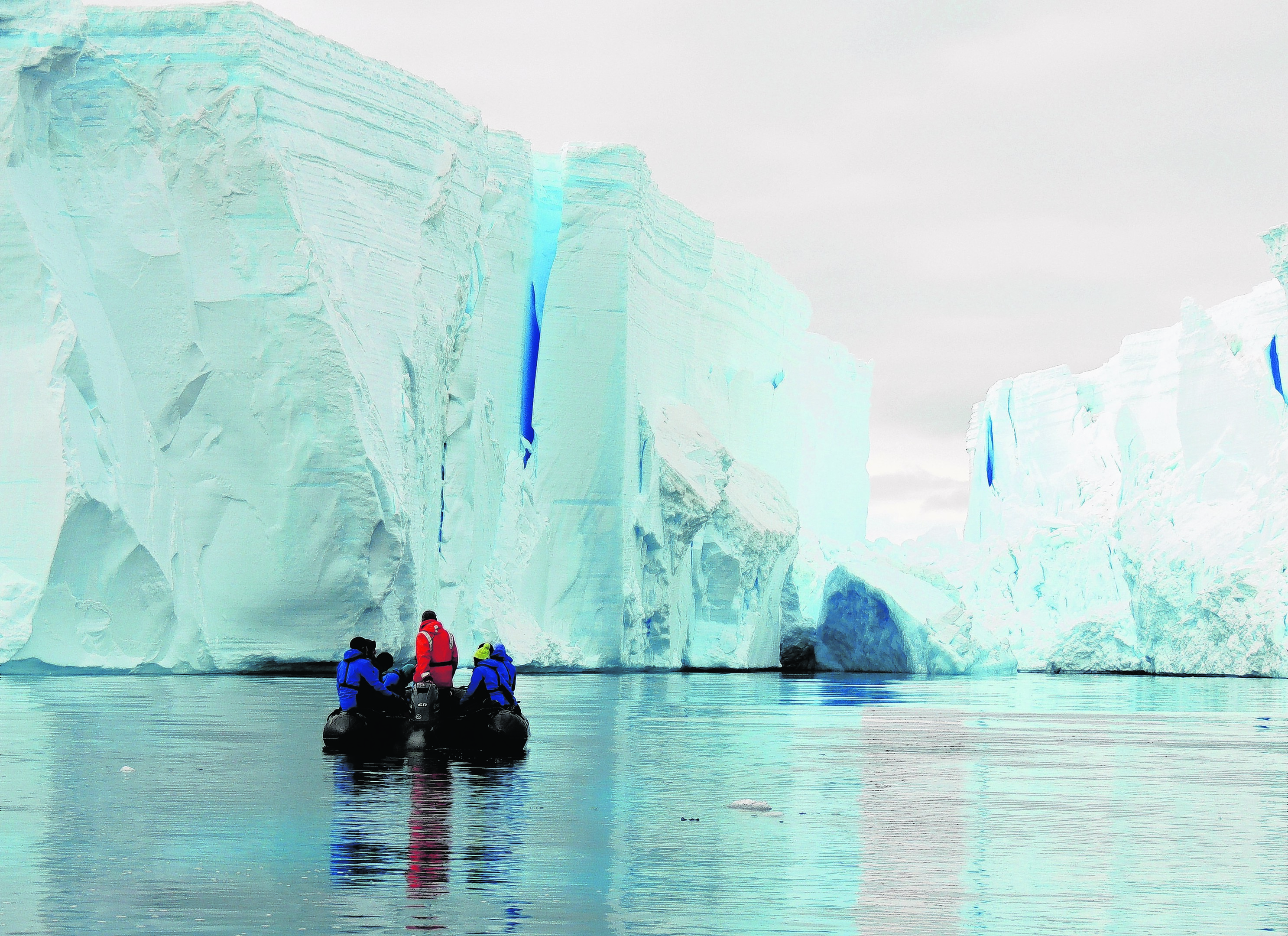
LAND AHOY!
We are in sight of the first snow-covered mountains of the northern tip of South Georgia. This narrow island is 170 kilometres long and about 1,450 kilometres south-east of the Falklands. In the 19th century, it was at the centre of the whaling industry. Today, with the exception of several research scientists, it is uninhabited. The snowy slopes of the coastal mountains (some are 3,000 metres high) glint and sparkle against a clear blue sky. On our way, we have the company of gentoo penguins and seals, which swim and jump parallel to the ship in tight formation.
We arrive at the Bay of Isles in the late afternoon. The zodiacs take us ashore. What can we see here? Answer: penguins. Great. However, I am completely unprepared for what is waiting on the other side of a stony rise. I can’t believe my eyes – 250,000 king penguins! (the number given by our ornithologist). The pungent smell and necessity of having to wade through a slimy mix of mud and penguin poo are a small price to pay for the sight of this unbelievable sea of penguins. 250,000! They are there to moult, hatch eggs, look after their young. These latter are easily recognisable: brown, fluffy, waddling fur coats. Stunning.
In among the penguins, there are hundreds of fur seals with small, cute, cuddly pups, which come right up to you – probably looking for mummy. The penguins, too, are inquisitive, seeming to have no fear of humans. My camera does overtime yet again.
NEXT DAY
A full programme today. Up at six, breakfast. At seven o’clock, we are in our zodiac. The Sea Adventurer is now in Hercules Bay, a small bay not far from yesterday’s anchorage. The weather is good, cold but no wind, clear air. We spend an easy hour in the zodiac, cruising slowly round the bay, watch the funny macaroni penguins clustered on the rocks, undecided whether to jump into the water or not. Suddenly, some do and shoot past like torpedoes. Fur seals are also there and entertain us likewise with their water gymnastics.
Back on board. Our ship continues on to Grytviken. Here you can see the rusted remains of an old whaling station. Between 1904 and 1965, 175,000 dead whales were “processed” in such places on South Georgia. The zodiacs take us the short distance from the ship to the pebbly beach. The weather is at its best: sunshine, no wind, a picture-book backdrop.
What is special about this whaling station is a small cemetery in which lies the grave of Sir Ernest Shackleton, the great Antarctic explorer. Shackleton set out from South Georgia in 1914 aiming to cross the Antarctic on foot, but his ship, Endurance, was beset by thick pack ice and crushed. However, due to his exceptional leadership and courage, he and his men all survived. It is one of the world’s greatest ever stories of survival. Together with the expedition team, we all stand round the low white fence surrounding his final resting place and, following tradition, drink a large Irish whisky (provided by the team) “to the Boss”, as he was affectionately called by his men. A moving experience.
EARLY START
Up at five o’clock. But why so early? We have two places to visit: first St Andrews Bay, then Gold Harbour. At 6am, we arrive at the former. This place is home to the biggest king penguin colony on South Georgia – 400,000 of the waddling creatures are gathered here today. This time we don’t have to fight our way through mud and excrement.
From the beach we climb a small hill, and from its summit we have the most unbelievable view. I’m not sure what to compare it with. No matter in which direction I look, a sea, a carpet of dinner-jacketed orange beaks with orange/yellow bow-ties. They have no fear of human visitors. Three come right up to me as if curious to know who I am. I wonder what they might be saying to each other? Perhaps: “He looks weird. Look at that funny hat with the ear flaps!” – “Yes, but he does suit that blue jacket.” – “OK, but he really should blow his nose, there’s a big drop hanging from the tip…” My camera battery breathes its last, so I sit down, wipe the drip from my nose, and try to take in this stunning panorama.
After lunch, we realise that the ship is slowing down. Why? Humpback whales have been sighted. Everybody charges out on deck, binoculars and cameras at the ready. What a sight. Whale “blows” all over the place – in front of and on either side of the ship. About 100 we are told. Some come very near. One turns on its side and smashes its pectoral fin into the surface of the water. Cheers and applause from all decks.
At Gold Harbour, the beach is littered with elephant seals. We witness confrontations between huge bulls fighting for dominance and their own harem of females. The ladies don’t seem particularly impressed with the Herculean efforts of their chosen spouse to protect their virtue. Typical!
We leave South Georgia in the evening, go south-west in the direction of Elephant Island. The ship sails parallel to the coast, giving us another breathtaking view of sunlit mountain tops. While we are enjoying the scenery and our evening meal, it happens. Suddenly, screams from the port side of the ship. People jump up from their seats. More screams. There follows a mass exodus from the dining room on to the back deck. Food is forgotten, wine glasses abandoned. No, silly, the ship is not sinking. But what happened? A humpback whale breached right next to the ship. I am one of the few who remain sitting – being trampled to death by a horde of raving, camera-wielding pensioners is a distinct possibility.
THREE DAYS AT SEA
No land in sight for three days. No question of boredom, however. We have several lectures on Antarctica and the latest scientific discoveries, whales, the old whaling industry, Shackleton’s famous voyage. All extremely informative and entertaining. The morning mist slowly clears, we put on our woollies, go out on deck, admire the acrobatics of the seabirds, enjoy the sunshine. The wind is icy. The bright sunlight is reflected by the waves, creating an enchanting spectrum of colour. Icebergs on the horizon.
At 10 in the evening on the third day, we finally arrive at Elephant Island. It was from here, this small, desolate, uninhabited island of snow and ice, that in 1916, Shackleton sailed the 800 miles to South Georgia in a small lifeboat to fetch help for the men he left behind. This epic journey is now regarded as one of mankind’s greatest. Our ship drops anchor in the bay where the journey began. What we see looking out from the deck is indeed intimidating: darkening sky, mist, a sheer wall of glacier ice, black rocks, ice floes bobbing in the churning water. The threatening side of nature.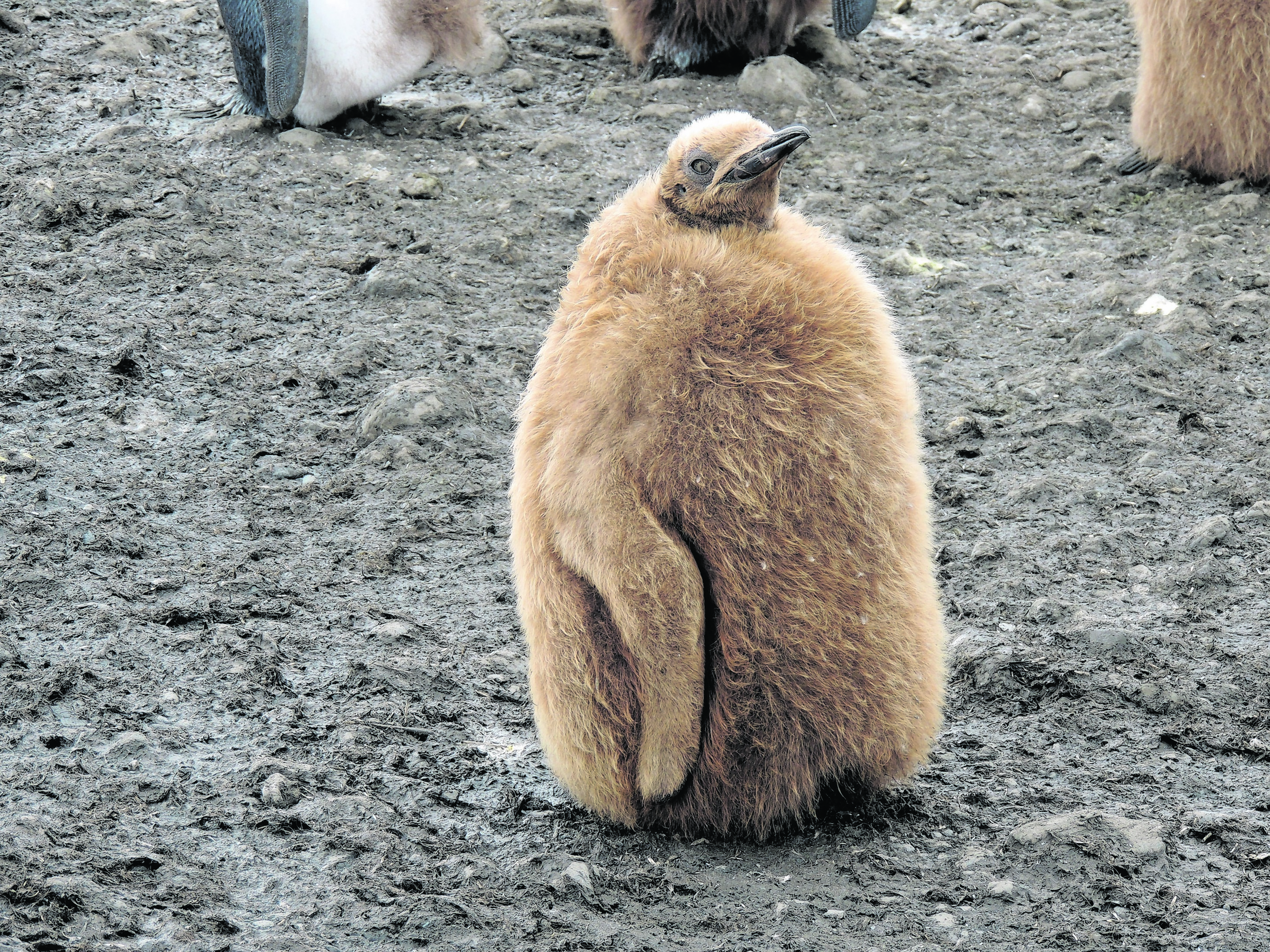
ANTARCTICA AT LAST
We are approaching the northern tip of the Antarctic continent. Massive icebergs can be seen from both sides of the ship. Some are of the tabular variety – very long and rectangular with a flat “roof”, others are bizarrely shaped, look like castles, cathedrals. Suddenly, a number of large dorsal fins emerge from the water – orcas, also known as killer whales. About 20. Everybody is on deck. For the following half hour, the clicking of a hundred cameras.
Six in the evening. We have arrived at the coast of the Earth’s most southerly continent. The Sea Adventurer reduces its speed to a minimum. It is difficult for me to describe what we now experience. The ship glides slowly past gigantic ice forms. These floating ice giants are so near that I have the feeling I could stretch out my arm and touch one. Some are 80, 90 metres high. The ship inches its way through them. Imagine a city of skyscrapers, but these skyscrapers are lying on their side. In the background the snow-covered mountains of the mainland. The sinking sun turns the sky into a fireball of red and orange. Spectacular.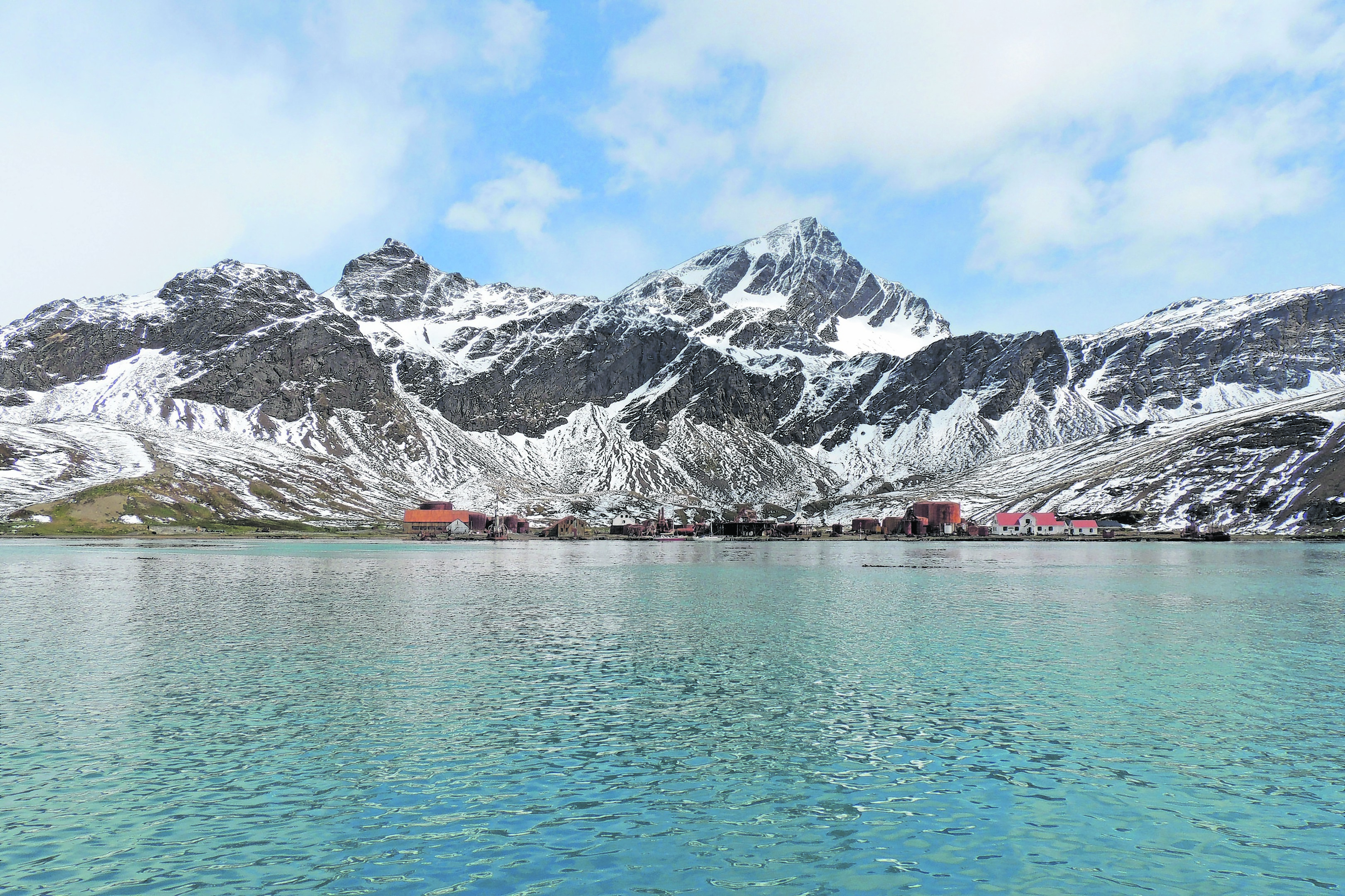
After dinner, our trusty zodiacs take us ashore. At half past eight, I stand on the stony beach of the seventh continent at a place called Brown Bluff. Hurrah! The usual reception committee is waiting – a mere 20,000 penguins, this time gentoos and Adélies. It is snowing, the bitterly cold wind driving the flakes into our faces. We spend an hour here, take photos – the wannabe professionals as always with their tripods and monster lenses. So, here I am. In the Antarctic, not too far from the South Pole, it is late in the evening, the sky is grey, I am freezing, almost blinded by the horizontal snowflakes, the pungent pong of penguins in my nostrils. How do I feel? Great!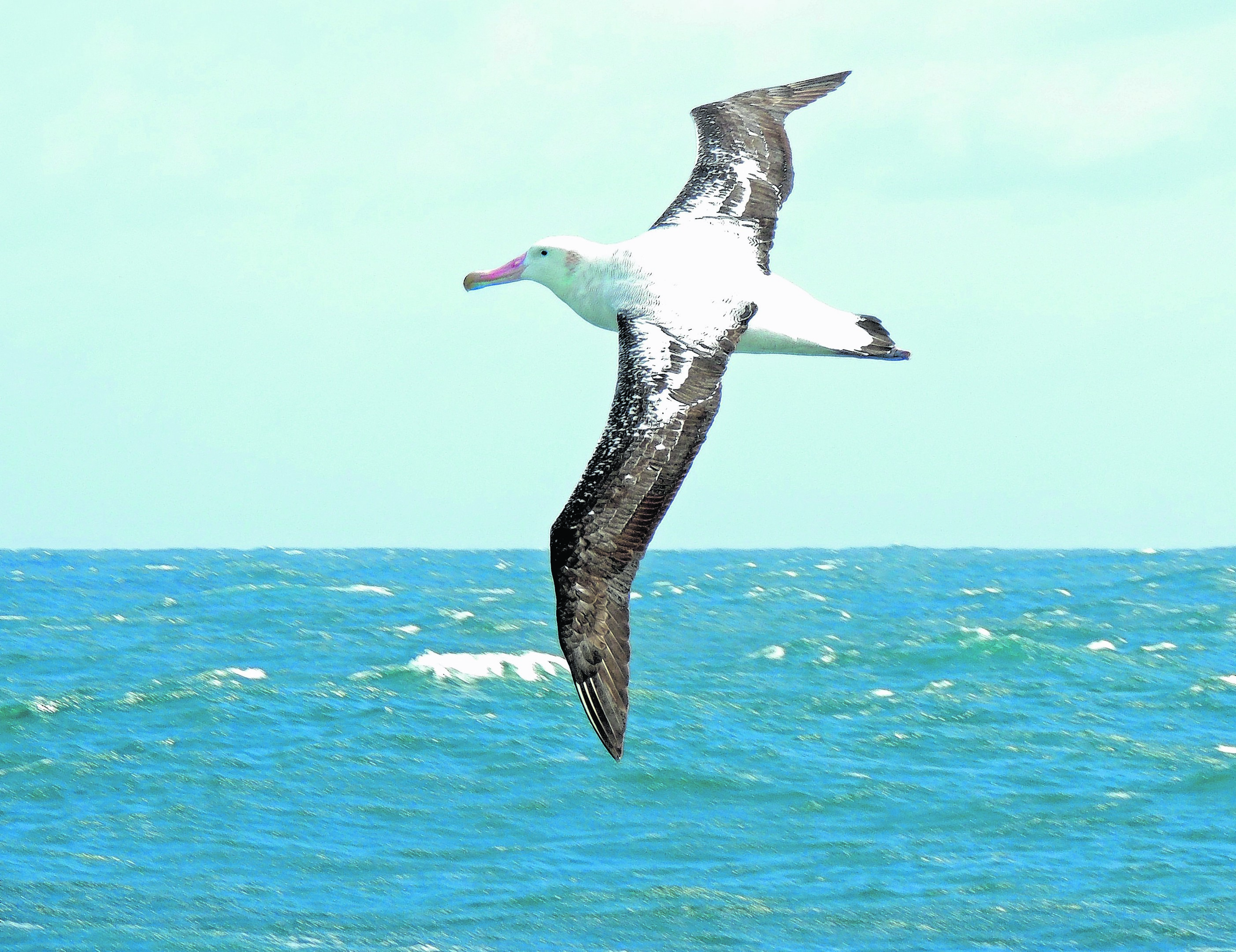
ICE!
I am awake at five. What is that noise? I look out of the cabin window. The ship is surrounded by pack ice, edging its way carefully through the large ice floes. What I hear is the scraping of the ice against the hull. We are now in the Antarctic Sound. Although it is still very early, all passengers are on deck. We are so fascinated by all this ice, that we have to be reminded of breakfast by the ship’s PA speakers.
The zodiacs take us to Paulet Island. This is a volcanic island which, even in winter, is free of ice and snow. Scientists guess that the last volcanic eruption here was a mere 1,000 years ago, so that there is still enough warmth in the ground to prevent a blanket of white forming. (A thousand years for a geologist are just a few seconds in real time.) We clamber around the island, marvel at the scenery, photograph the funny Adélie penguins. A French polar explorer (forgotten the name) named them after his wife. They are short, fat, loud, dumpy and quarrelsome. I wonder if that was really a compliment.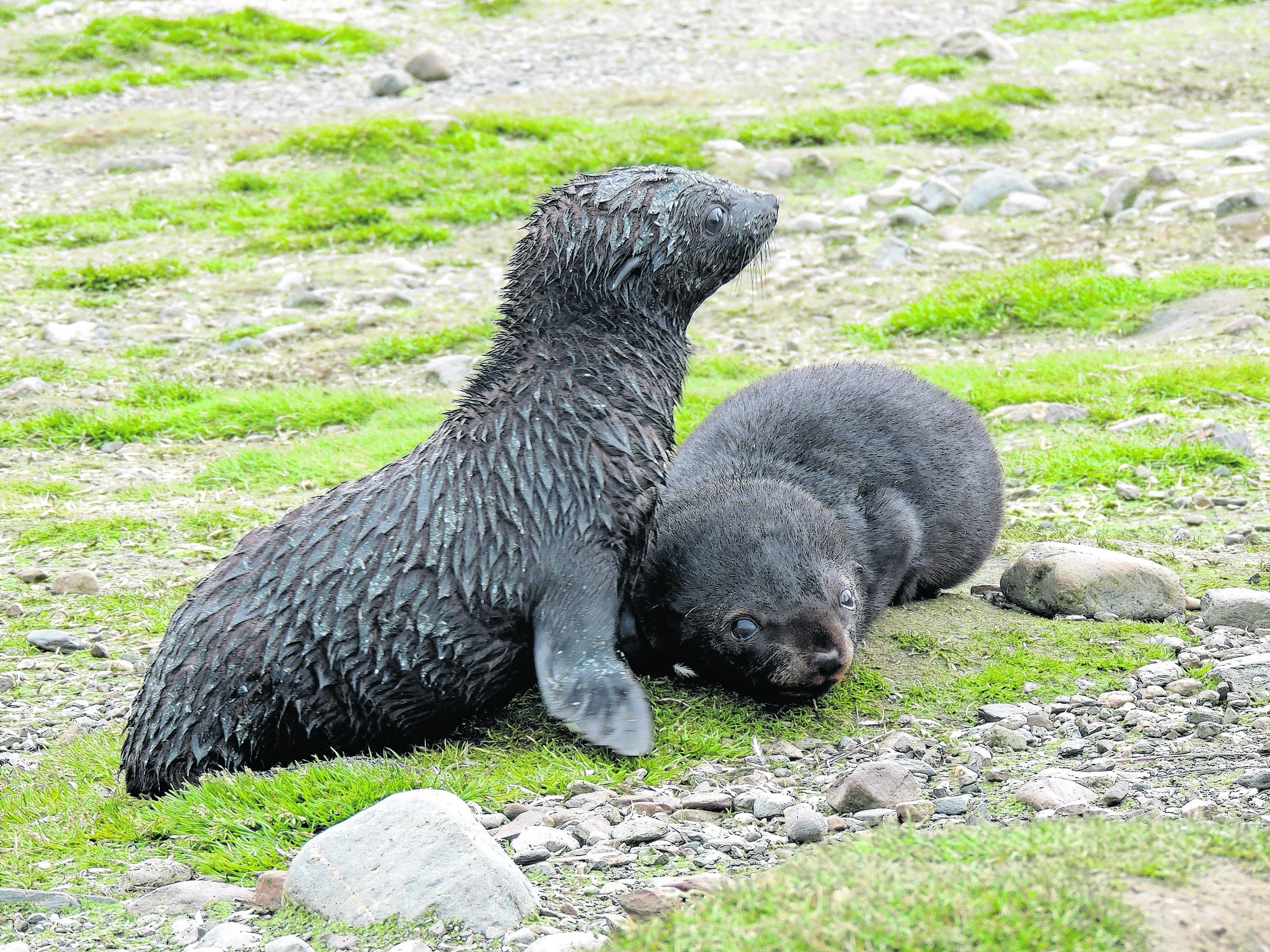
We spend a memorable three hours in the afternoon zodiac-cruising in this world of ice. The weather is fantastic: blue sky, sun, no wind, the sea is like the proverbial millpond. We are on the lookout for whales. And yes! A humpback pays a visit. It surfaces close to our zodiac, slaps its huge pectoral fin into the water, then disappears. Silence in the zodiac. There are 10 of us, kneeling, crouching, lying, standing, cameras pointing. Will it resurface? Where? When? Amazing how agile the more corpulent members of our boat have become, twisting their anatomy into contorted positions to get – hopefully – a good view. After several minutes, the whale reappears, dives again, comes back up, dives. Fantastic.
During this time, the ship has steamed further away and we now have a few miles to catch up. George, our zodiac driver (“gorgeous George” to quote Lynda!), opens the throttle, and the boat catapults forward as we zoom towards the ship and a steaming mug of hot chocolate. A day to remember.
HEADING HOME
A relaxing day on board. We are now on our way back to Ushuaia via the infamous Drake Passage. The weather has deteriorated with huge waves crashing against the ship’s hull. Once more it is difficult to keep our balance, and it is again entertaining to observe the various methods of creating forward propulsion. One of the more promising solutions is to stand with feet wide apart as if you have two prosthetic legs, and then rock from side to side. The attractive young waitress who serves us at dinner doesn’t quite manage this. She has to throw her arms round my neck to avoid falling. Or is this her intention? I could well understand it!
DEPARTURE
Our last day on the ship. The weather is surprisingly calm, no more rocking and rolling. Later, in the lounge, the individual members of the expedition team bid us farewell with amusing anecdotes and pictures from their globe-trotting experiences. Before dinner, the captain says goodbye with a glass of bubbly. E-mail addresses are exchanged, then it is time to pack and leave for the sunshine and balmy climate of Aberdeenshire!
Tour operator: Zegrahm Expeditions. Contact:
https://www.zegrahm.com
. Flights booked independently with Iberia.
